Introduction
The world of stews is rich and comforting, offering a myriad of flavors and textures that warm the soul. Among the vast array of stew recipes, the Philly Cheesesteak Stew stands out as a delightful fusion of two beloved culinary traditions. Imagine the robust flavors of a classic Philly cheesesteak sandwich—tender beef, sautéed onions, and gooey cheese—immersed in a hearty, savory broth filled with vegetables and spices. This dish brings together the best of both worlds, offering the satisfaction of a stew with the iconic taste of Philly’s favorite sandwich.
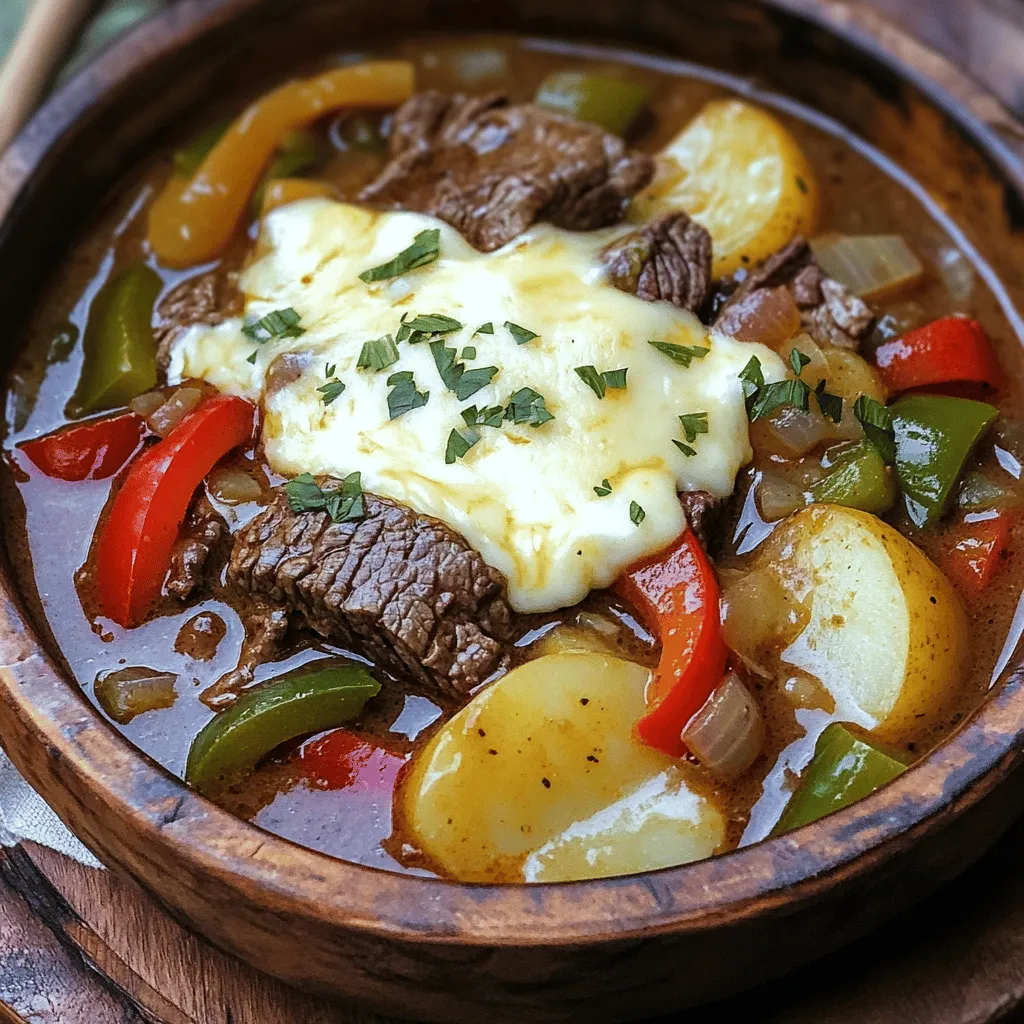
Originating from Philadelphia, the cheesesteak is a staple of American cuisine, known for its simplicity and indulgence. The Philly Cheesesteak Stew takes this beloved dish and transforms it into a cozy, one-pot meal that’s perfect for family dinners or those chilly nights when all you crave is comfort food. The appeal of this stew lies not only in its flavors but also in its heartiness—each spoonful is a delightful combination of tender beef, melty cheese, and a medley of vegetables that will leave you craving more.
In this article, we will delve into the key ingredients that make up this sumptuous stew, offering insights that will enhance your cooking experience. We will also provide a detailed step-by-step guide to preparing this dish, ensuring that you can recreate the authentic flavors of Philadelphia in your own kitchen.
Understanding the Ingredients
To create the perfect Philly Cheesesteak Stew, it’s essential to focus on the quality of the ingredients. Each component plays a vital role in building the rich flavors and comforting texture of the dish. Let’s explore the star ingredients that come together to create this culinary masterpiece.
The Star Ingredient: Beef Sirloin
At the heart of the Philly Cheesesteak Stew is the beef sirloin, which is renowned for its tenderness and robust flavor. This cut of meat is ideal for stewing, as it becomes incredibly tender during the cooking process, allowing it to soak up the flavors of the broth and other ingredients. When selecting beef sirloin, look for cuts that are bright red with a good amount of marbling—this fat will render during cooking, contributing to the stew’s richness.
Choosing the right cut is crucial for achieving the best results. You may also consider using flank steak or ribeye as alternatives, both of which are flavorful and will provide a satisfying chew. Remember to cut the beef into bite-sized pieces to ensure even cooking and easy serving.
Vegetable Medley: Onions, Peppers, and Garlic
No stew is complete without a flavorful vegetable base, and in the case of Philly Cheesesteak Stew, diced onions, red and green bell peppers, and garlic are essential. These vegetables not only contribute to the overall taste but also enhance the nutritional profile of the dish.
Diced onions add sweetness and depth, caramelizing beautifully as they cook. The red and green bell peppers introduce a hint of freshness and a pop of color, making the stew visually appealing. Garlic, known for its aromatic qualities, infuses the stew with a warm, savory essence that elevates the dish to new heights.
Together, this vegetable medley forms a robust foundation that balances the richness of the beef and cheese, creating a harmonious blend of flavors that will tantalize your taste buds.
Seasoning and Flavor Enhancements
To truly capture the essence of a Philly cheesesteak, proper seasoning is key. A combination of Worcestershire sauce, dried oregano, and smoked paprika works wonders in enhancing the dish’s flavor profile.
Worcestershire sauce introduces a complex umami flavor, contributing to the stew’s depth and richness. Dried oregano, with its fragrant and slightly peppery notes, infuses the stew with a Mediterranean touch, while smoked paprika adds a subtle smokiness that pays homage to the grilled flavors of traditional cheesesteaks.
These seasonings not only enhance the flavors but also create a more nuanced and satisfying eating experience, ensuring that every bite is filled with delightful surprises.
The Comfort Factor: Potatoes and Cheese
One of the elements that make the Philly Cheesesteak Stew particularly comforting is the inclusion of diced potatoes. Potatoes serve as a hearty addition, absorbing the flavors of the broth while providing a satisfying texture. Their creamy interior complements the tender beef and vegetables, making the stew filling and perfect for a cozy meal.
To take the comfort factor up a notch, provolone cheese is added towards the end of the cooking process. Known for its excellent melting qualities, provolone cheese adds a creamy, rich layer to the stew, creating that signature cheesesteak experience. As the cheese melts, it creates a luscious, gooey texture that envelops the other ingredients, making each spoonful irresistibly delicious.
Optional Ingredients: Customizing Your Stew
While the classic Philly Cheesesteak Stew is already packed with flavor, you can customize it further by adding optional ingredients like sliced mushrooms. Mushrooms contribute an earthy flavor and a meaty texture that complements the beef, making the stew even heartier.
Feel free to experiment with other vegetables as well, such as carrots or zucchini, to add your personal touch to the dish. The beauty of this stew lies in its versatility; you can easily adapt it to suit your taste preferences while maintaining the essential flavors that make it so delightful.
Step-by-Step Cooking Instructions
Now that we have explored the key ingredients that contribute to the Philly Cheesesteak Stew, it’s time to dive into the cooking process. With a clear and detailed guide, you’ll be able to prepare this comforting dish with ease.
Preparing the Base
1. Gather the Ingredients: Before you begin cooking, gather all the necessary ingredients. This includes beef sirloin, diced onions, red and green bell peppers, garlic, diced potatoes, Worcestershire sauce, dried oregano, smoked paprika, provolone cheese, and any optional ingredients you wish to include.
2. Prepare the Vegetables: Start by washing and chopping the vegetables. Dice the onions and bell peppers into small pieces, and mince the garlic. If you’re using mushrooms, slice them thinly.
3. Cut the Beef: Trim any excess fat from the beef sirloin and cut it into bite-sized pieces. Season the beef pieces with salt and pepper to enhance their flavor.
4. Sauté the Base Ingredients: In a large pot or Dutch oven, heat a tablespoon of oil over medium heat. Add the diced onions and sauté them until they begin to soften and turn translucent, about 3-4 minutes. Next, add the bell peppers and garlic, cooking for an additional 2-3 minutes until fragrant.
As you prepare the base for your stew, the kitchen will fill with delicious aromas, setting the stage for the comforting meal that awaits. The next steps will guide you through the heart of cooking the stew, ensuring that every ingredient shines through in this tasty homage to the classic Philly cheesesteak.
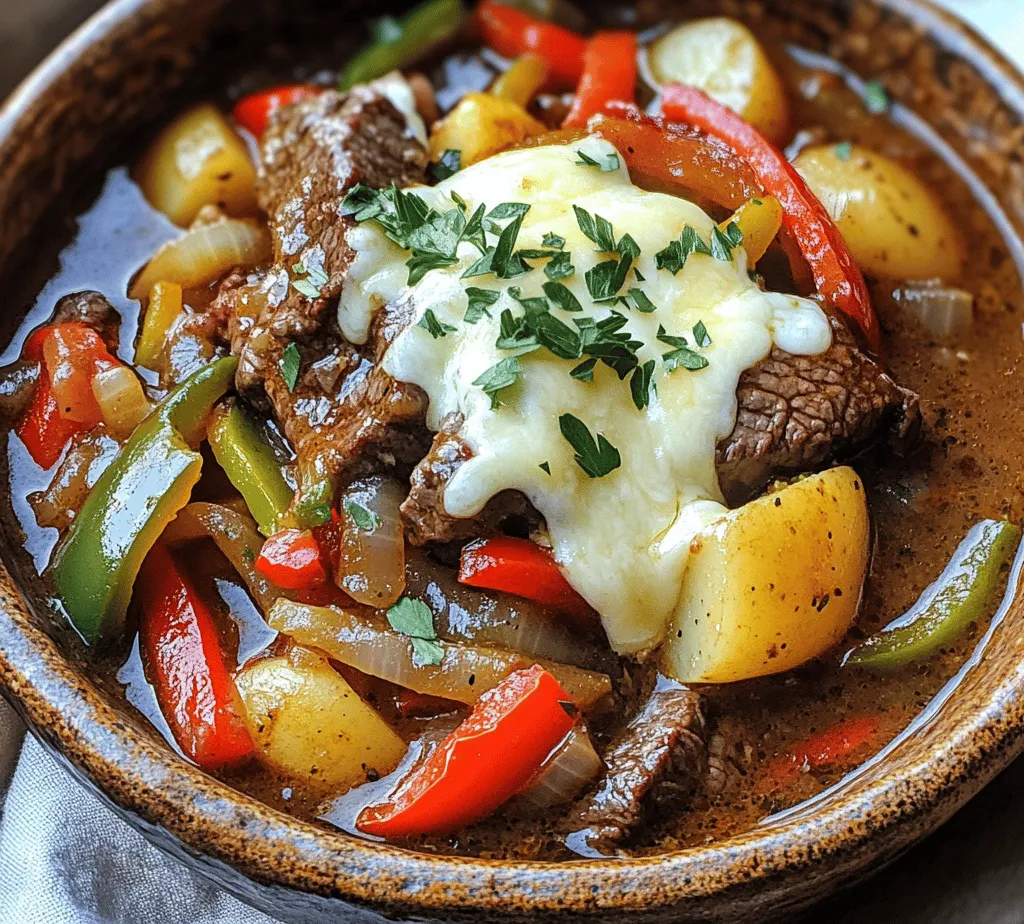
To create a hearty and flavorful Philly Cheesesteak Stew, we need to focus on the techniques that will bring out the best in each ingredient. Let’s delve into the steps for searing the beef, sautéing the vegetables, building the stew, adding the final touches of cheese, and presenting this delicious dish to your guests.
Searing the Beef
Begin by heating a generous amount of olive oil in a large Dutch oven or heavy-bottomed pot over medium-high heat. The key to achieving the perfect browning lies in ensuring that the oil is hot enough before adding the beef. Test the heat by dropping a small piece of meat into the pot; it should sizzle immediately.
Once the oil is ready, add the sliced beef in batches, taking care not to overcrowd the pan. Overcrowding will lower the temperature of the oil and result in steaming rather than browning. Sear the beef for about 2-3 minutes on each side until it develops a rich, brown crust. This Maillard reaction not only enhances the flavor but also adds depth to the stew. Once browned, transfer the beef to a plate and set aside.
Sautéing the Vegetables
With the beef seared perfectly, it’s time to sauté the vegetables. In the same pot, add the onions and bell peppers, scraping the bottom to release any flavorful browned bits left from the meat. Sauté the vegetables for about 5-7 minutes until they are soft and slightly caramelized. You want them to be tender yet still retain some crunch for texture in the stew.
Next, add minced garlic and continue to sauté for an additional minute. Garlic can burn easily, so it’s essential to add it towards the end of the sautéing process. The goal is to achieve a fragrant and aromatic base that will complement the rich flavors of the stew.
Building the Stew
Now that your beef and vegetables are prepared, it’s time to build the stew. Return the seared beef to the pot and add in your beef broth and Worcestershire sauce. Stir well to combine all the ingredients. The broth will serve as the foundation of the stew, infusing it with moisture and flavor.
Next, add any additional seasonings, such as salt, pepper, and Italian seasoning, to taste. If you enjoy a bit of heat, consider adding a pinch of red pepper flakes. Once everything is combined, bring the stew to a boil, then reduce the heat to low. Cover the pot and let it simmer gently for at least 30-45 minutes. This simmering stage is crucial, as it allows the flavors to meld together beautifully, creating a rich and hearty stew.
Final Touches: Melting the Cheese
The moment you’ve been waiting for is finally here: the addition of the provolone cheese. Once the stew has simmered and the beef is tender, it’s time to stir in the cheese. You can either shred the cheese or slice it into small pieces for easier incorporation.
Add the cheese to the stew and stir gently until it melts into the broth, creating a creamy texture. Look for visual cues such as a smooth and velvety consistency, and a rich, cheesy aroma that fills your kitchen. This step transforms your stew into a decadent dish reminiscent of the classic Philly cheesesteak.
Serving Suggestions
When it comes to serving your Philly Cheesesteak Stew, presentation is key. Opt for deep bowls to serve the stew, which not only enhances the visual appeal but also allows for a generous portion. Ladle the stew into each bowl, ensuring a good mix of meat and vegetables in every serving.
Presentation Tips
For an extra touch of flavor and aesthetics, garnish each bowl with freshly chopped parsley and additional shavings of provolone cheese. The vibrant green of the parsley adds a pop of color, while the cheese provides an enticing visual that reflects the stew’s rich flavors.
Pairing Recommendations
To enhance your dining experience, consider pairing the stew with a crusty bread or dinner rolls. The bread is perfect for soaking up the flavorful broth. Alternatively, a side salad with a tangy vinaigrette can provide a refreshing contrast to the richness of the stew.
For beverages, a light lager or a robust red wine complements the flavors of the stew beautifully, creating a balanced meal that is sure to impress your guests.
Nutritional Information
Understanding the nutritional aspects of your Philly Cheesesteak Stew can help you enjoy it as part of a balanced diet. Each serving provides a hearty dose of protein, vitamins, and minerals that are essential for maintaining good health.
Analyzing the Nutritional Value
This stew is loaded with key nutrients from its primary ingredients. The beef is an excellent source of high-quality protein, which is vital for muscle repair and growth. The onions and bell peppers add essential vitamins, particularly vitamin C and various antioxidants that support immune health.
The provolone cheese not only contributes to the creamy texture but also provides calcium, which is essential for bone health. The combination of these ingredients results in a balanced dish that is rich in macronutrients—protein, fats, and carbohydrates.
Conclusion
Making Philly Cheesesteak Stew at home is a delightful way to enjoy a comforting, hearty meal that can bring warmth and happiness to any dining occasion. The process is straightforward, allowing you to create a dish that showcases the rich flavors of beef and cheese, combined with the freshness of sautéed vegetables.
Whether you’re preparing it for a family dinner or a gathering with friends, this stew is sure to be a crowd-pleaser. Its comforting nature, ease of preparation, and inviting aroma will fill your kitchen and your hearts. So gather your loved ones around the table, serve up generous portions of this delicious stew, and relish the joy of sharing a homemade meal that satisfies both body and soul.
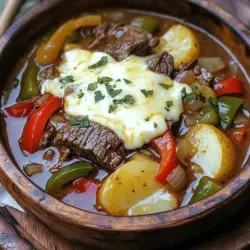

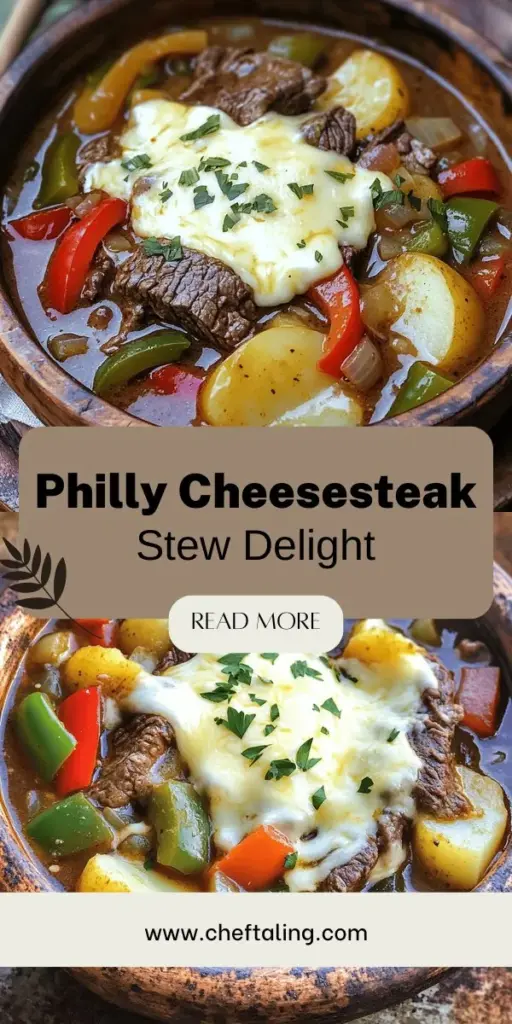

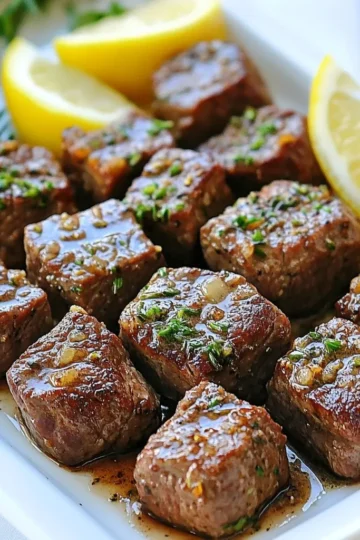
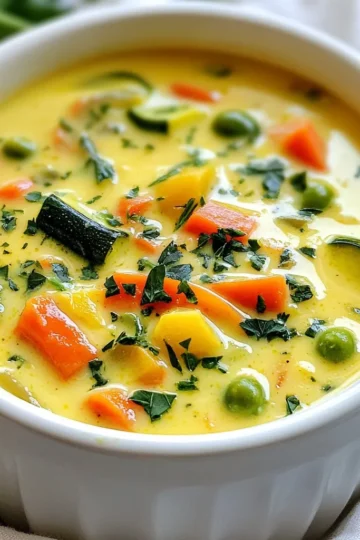
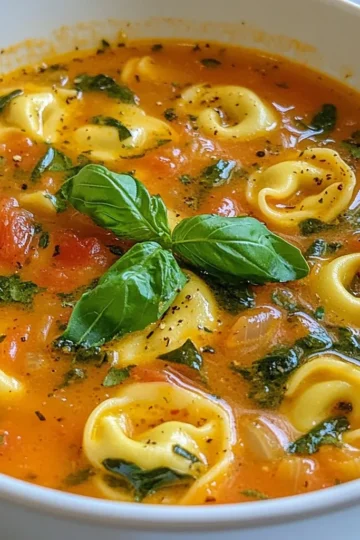
Leave a Reply